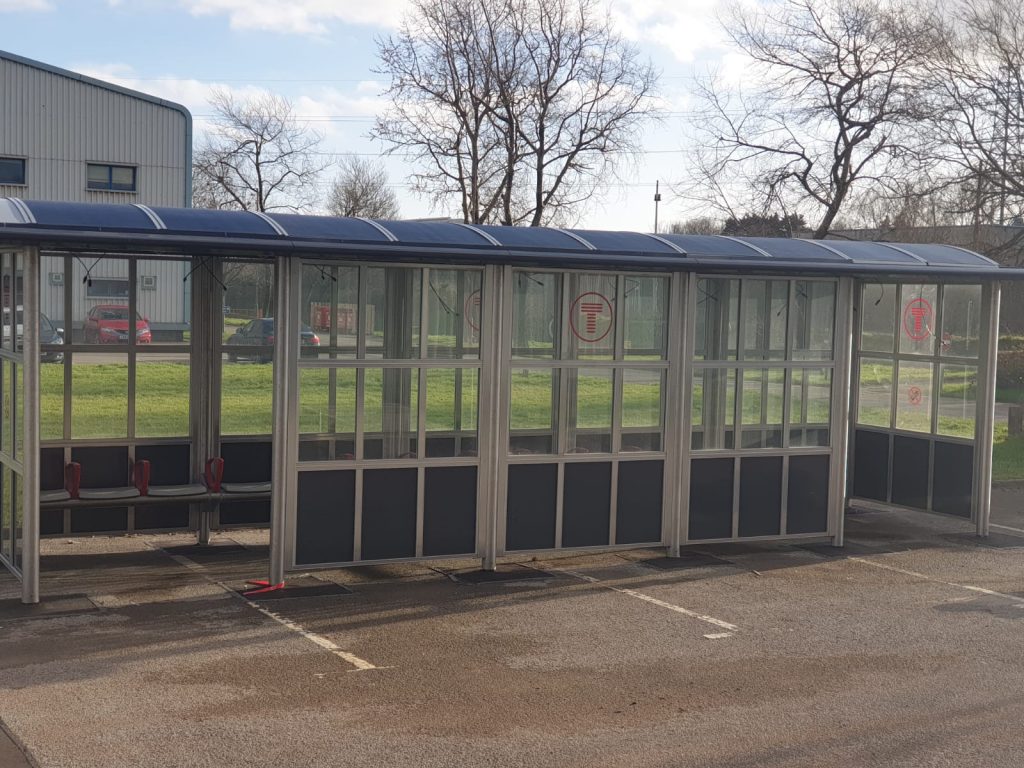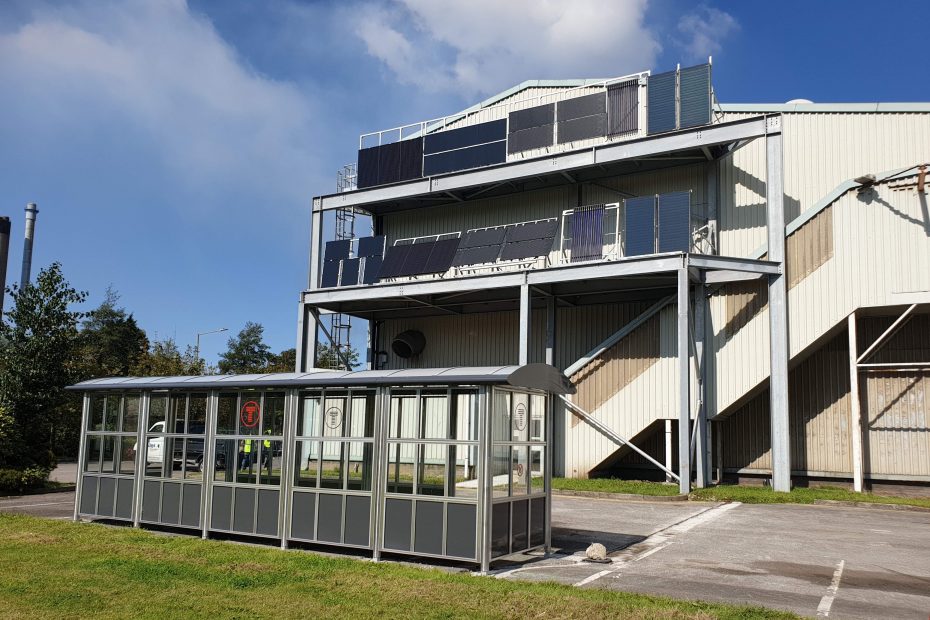One of Transport for Wales (TfW)’s objectives is to ensure truly sustainable travel, and it has announced that electricity for stations and overhead wires on the Core Valley Lines will come from 100% renewable energy . As part of that vision, TfW recognises the work that SPECIFIC is doing around the decarbonisation of buildings, and a collaborative project has been established.
SPECIFIC’s most recent Active Building demonstration is a rail-approved platform waiting shelter. The shelter has been installed at the Solar Heat Energy Demonstrator (SHED) site and is being used for testing and verification of suitable solar technology. The aim is to prove that there is a use case for an off-grid rail waiting shelter which can be installed at rural stations, and will enable the structure to generate, store and release enough energy to run essential services in a low carbon manner.
The development of the standalone product – which could be installed independently – will be investigated, and the operational carbon impact of this active structure will be measured and monitored, with a view to providing data on effectiveness and efficiency in situ. If possible, and with a view on the circular economy, the project will also seek to develop bolt-on solution which allow Active Building technologies to be integrated into the existing structures of this type across rail platforms in Wales and across the UK.

By modifying an existing rail shelter, the technology has enabled the structure to generate its own power, and store that in a significant battery system. The system is working at present, delivering light through 10 LEDs, and customer information will be displayed through 2 low-voltage, high-brightness screens. Live data, including, energy consumption, energy generation and efficiency, will be monitored for twelve months to monitor whether the technologies can be realistically deployed on a TfW rail platform. An energy feasibility report will be produced to determine whether the structure can operate to TfW standards all year around (by capturing and storing energy during sunny days, and releasing it as needed).
The project will also investigate use of further technologies – including WiFi hotspots, mobile device charging and advertising profiles – which will improve provision of service to customers and establish further partnerships.
OBJECTIVES
- To identify suitable Active Building technologies that will allow the structure to capitalise on solar energy availability at the location specified.
- Develop an engineering solution with aims to keep as much of the original structure as possible, potentially making it suitable for retrofit to some of the hundreds of shelters already installed across the rail network.
- Specify and install technologies in a way which meets stringent rail safety standards and ensures lifetime performance and security.
- Investigate the opportunity for installation of solar powered additional convenience services currently not provided as standard.
- Capture energy performance data and use this to understand the operational carbon impact over a 1 year test period.
